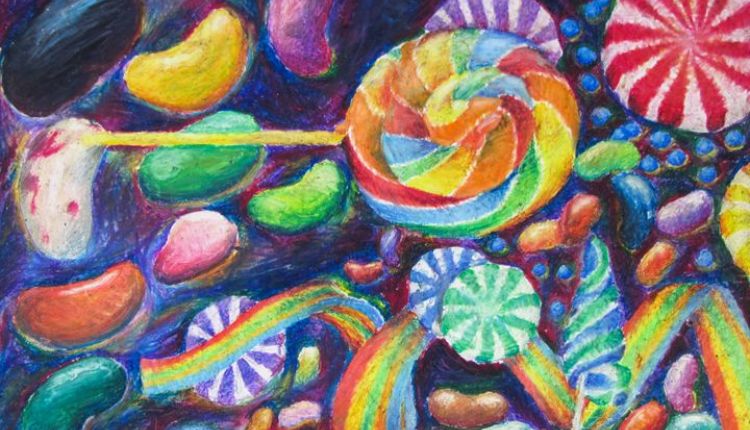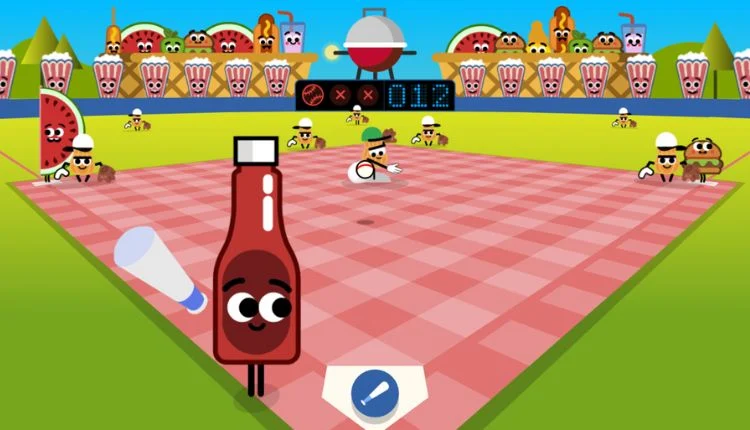It captures the colourful and beautiful world of Candy drawing, allowing artists to recreate the texture, shine and joy of the sweet treats on paper or digital canvases. This art form has become increasingly popular among beginners and professionals alike due to its vibrant colour palette and cheerful subject matter. Whether you’re doing it for fun, illustration work, or advertising, drawing candy offers a playful way to explore artistic skills while celebrating the magic of sweets.
The Allure of Candy in Art
Candies symbolise happiness, nostalgia and enjoyment. For many artists, drawing candy is more than just sketching shapes—it’s about evoking emotions and memories. Bright wrappers, shiny coatings and different textures make candies the perfect objects for learning about light reflection and colour blending.
Through drawing candy, artists can experiment with techniques that help them master realism, shading, and digital rendering. The joy of illustrating something so universally loved adds extra excitement to the creative process.
Materials and tools for drawing candy
The right materials are essential to bring candy drawing to life. Traditional artists often rely on high-quality coloured pencils, markers, and watercolour paints to capture the glossy surface and subtle gradations of candy.
Smooth paper is ideal for detailed rendering, while textured paper adds a unique touch. Digital artists use drawing tablets and software such as Procreate, Adobe Photoshop, or Clip Studio Paint to create vibrant candy artwork. The advantage of digital tools is their flexibility—artists can layer colours, adjust lighting, and experiment with endless palettes without physical limitations.
Exploring different types of candy for drawing
The world of candies offers countless inspirations. Artists can draw crystal-clear hard candies, richly textured chocolate bars, or swirly-patterned lollipops. Gummies, marshmallows, and candies each have their own visual appeal.
The variety of candy shapes and colours allows you to experiment with perspective, composition, and realism. Drawing transparent candies challenges the artist’s understanding of light refraction, while chocolate requires mastering matte textures and reflections. Each type of candy brings its own artistic challenge and satisfaction.
Techniques to master candy drawing
Drawing candy involves observing fine details and applying creative techniques to capture the sweet essence. Blending is key to achieving smooth transitions, especially with round candies or shiny surfaces. Artists often start with light sketches, gradually layering colours to create depth.
Highlights play the main role – adding small white highlights instantly brings the candies to life. Shading also defines volume and realism. In digital art, soft brushes and layer modes like “overlay” or “multiply” help achieve the right balance of lighting. With consistent practice, artists can perfect the illusion of three-dimensional candies that look almost edible.
Candy Drawing in Digital Media
With the growth of digital platforms, candy drawing has found a new home online. Artists share their creations on social media platforms like Instagram, Pinterest, and DeviantArt and inspire others to try the art form. Digital illustrations of candies often appear in branding, packaging design and animation projects.
The shiny, colorful nature of candies translates beautifully into digital art, allowing designers to use them in attention-grabbing advertisements and illustrations. Tutorials and digital brushes specifically designed for candy effects have made exploring this sweet aesthetic easier than ever.
Drawing sweets for beginners
Beginners can start candy drawing by choosing simple shapes like round candies or lollipops. Focusing on one candy at a time helps to understand how light interacts with the surface. It’s helpful to use reference photos to study actual candies before drawing.
Beginners should experiment with different colour combinations to develop a sense of vibrancy and contrast. Starting with the outlines of the sketch, gradually shading and softening the edges can make even simple candies look realistic. Patience is essential, as fine details often make the biggest difference. Over time, basic sketches can develop into detailed works of art full of depth and realism.
The role of color in drawing candy
Colour is the heart of candy drawing. Each shade contributes to the mood and energy of the artwork. Warm tones like red, yellow and pink often evoke a feeling of sweetness and excitement, while cooler tones like blue and green bring balance and freshness.
Artists carefully mix colors to mimic the sheen and texture of sugar or the creamy texture of chocolate. The interplay of light and colour gives candies their irresistible visual appeal. Mastering color harmony is essential when drawing candy because it allows artists to make their work realistic and visually captivating.
Candy drawing as a form of therapeutic art
Drawing sweets, in addition to its visual appeal, serves as a relaxing and therapeutic activity. The process of focusing on small details, playing with colours and creating something joyful helps relieve stress. It brings a sense of calm and accomplishment, especially when the end result looks deliciously realistic.
Many artists use candy drawing as a form of art therapy that promotes mindfulness and creativity. Since candies symbolise happiness and nostalgia, drawing them can lift your mood and promote positive emotions.
Incorporating candy artwork into modern design
Candy drawing has spread into commercial design fields such as advertising, fashion, and digital illustration. Candy-themed artwork is often used to promote candy brands, design playful posters, or add a touch of sweetness to product packaging.
In the gaming and animation industries, candy-inspired visuals are appearing in fantasy worlds, character designs, and backgrounds. This versatility shows how candy drawing has moved beyond a personal hobby to become a valuable creative skill in professional art and design.
Creating a candy drawing style
Each artist develops a unique style over time. Some prefer hyper-realistic renderings that make the candies look photographic, while others opt for whimsical or cartoonish interpretations. Experimenting with contours, colour intensity, and proportions helps define an artist’s identity.
Adding personalised touches, such as melted chocolate effects or caramel dripping, can add to the originality. The key to creating a recognisable style is consistency and experimentation – trying different types of candy, angles, and moods until the drawing reflects personal creativity.
Wrapping It Up
Candy drawing combines imagination, precision and the universal love of sweets. Visually rewarding and emotionally soothing, it offers artists endless opportunities to explore light, colour and texture.
From traditional sketches to digital masterpieces, candy drawing has evolved into a joyful art form that appeals to artists of all ages and skill levels. Its charm lies in its simplicity—the ability to transform everyday confections into beautiful visual expressions. Whether practiced for fun or professional purposes, candy drawing remains a sweet celebration of creativity and artistic passion.





